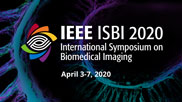Collection:

The improvements in magnetic resonance imaging have led to the development of numerous techniques to better detect structural alterations caused by neurodegenerative diseases. Among these, the patch-based grading framework has been proposed to model local patterns of anatomical changes. This approach is attractive because of its low computational cost and its competitive performance. Other studies have proposed to analyze the deformations of brain structures using tensor-based morphometry, which is a highly interpretable approach. In this work, we propose to combine the advantages of these two approaches by extending the patch-based grading framework with a new tensor-based grading method that enables us to model patterns of local deformation using a log-Euclidean metric. We evaluate our new method in a study of the putamen for the classification of patients with pre-manifest Huntington's disease and healthy controls. Our experiments show a substantial increase in classification accuracy (87.5 pm 0.5 vs. 81.3 pm 0.6) compared to the existing patch-based grading methods, and a good complement to putamen volume, which is a primary imaging-based marker for the study of Huntington's disease.
- IEEE MemberUS $11.00
- Society MemberUS $0.00
- IEEE Student MemberUS $11.00
- Non-IEEE MemberUS $15.00
Videos in this product
Tensor-Based Grading: A Novel Patch-Based Grading Approach for the Analysis of Deformation Fields
The improvements in magnetic resonance imaging have led to the development of numerous techniques to better detect structural alterations caused by neurodegenerative diseases. Among these, the patch-based grading framework has been proposed to model local patterns of anatomical changes. This approach is attractive because of its low computational cost and its competitive performance. Other studies have proposed to analyze the deformations of brain structures using tensor-based morphometry, which is a highly interpretable approach. In this work, we propose to combine the advantages of these two approaches by extending the patch-based grading framework with a new tensor-based grading method that enables us to model patterns of local deformation using a log-Euclidean metric. We evaluate our new method in a study of the putamen for the classification of patients with pre-manifest Huntington's disease and healthy controls. Our experiments show a substantial increase in classification accuracy (87.5 pm 0.5 vs. 81.3 pm 0.6) compared to the existing patch-based grading methods, and a good complement to putamen volume, which is a primary imaging-based marker for the study of Huntington's disease.
 Cart
Cart Create Account
Create Account Sign In
Sign In
